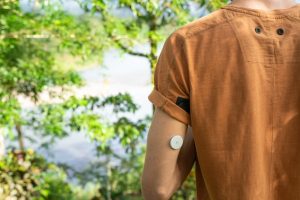Seeing things clearly at the children’s hospitals
It’s hard to overstate the importance of the work being done by the multi-state Children’s Hospitals’ Solutions for Patient Safety (SPS) Network. What started as a cooperative effort among the Ohio hospitals–“We compete on everything, but we don’t compete on safety”–has spread beyond, representing over 70 pediatric hospitals across the country.The network sets forth an urgent mission: To eliminate serious harm across all children’s hospitals.They note:The Network has compelling evidence that shows that if the SPS Prevention Bundles are implemented reliably, the Network will reduce harm. Employing high-reliability concepts and quality improvement science methods, SPS is focused on reducing harm by preventing readmissions, serious safety events, and the ten hospital-acquired conditions (HACs) below:Adverse drug events (ADE)Catheter-associated urinary tract

It’s hard to overstate the importance of the work being done by the multi-state Children’s Hospitals’ Solutions for Patient Safety (SPS) Network. What started as a cooperative effort among the Ohio hospitals–“We compete on everything, but we don’t compete on safety“–has spread beyond, representing over 70 pediatric hospitals across the country.
The network sets forth an urgent mission: To eliminate serious harm across all children’s hospitals.
They note:
The Network has compelling evidence that shows that if the SPS Prevention Bundles are implemented reliably, the Network will reduce harm.
Employing high-reliability concepts and quality improvement science methods, SPS is focused on reducing harm by preventing readmissions, serious safety events, and the ten hospital-acquired conditions (HACs) below:
- Adverse drug events (ADE)
- Catheter-associated urinary tract infections (CAUTI)
- Central line-associated blood stream infections (CLABSI)
- Injuries from falls and immobility
- Obstetrical adverse events (OBAE)
- Peripheral intravenous infiltration and extravasations (PIVIEs)
- Pressure ulcers (PU)
- Surgical site infections (SSI)
- Ventilator-associated pneumonia (VAP)
- Venous thromboembolism (VTE)
And, significantly, they are measuring the results and are posting the outcomes for the world to see. Check that out here. I post just one example for illustration.
And for those who argue that the key to quality and safety improvement is government regulation and changes in hospital and physician pricing, look at this summary:
Through implementation of the Network’s best practices, children are being protected from harm. Since 2012, this national effort has led to an estimated savings of more than $79 million and saved 3,699 children from serious harm, with a consistent upward trend in harm prevented every month.
These doctors and nurses and their associated hospitals are doing what they are doing not because the government is telling them to and not because rate structures may or may not have changed–but because it is consistent with their sense of purpose and motivational to them as professionals.
Now, if we could just get the adult hospitals to grow up and follow the lead of the children’s hospitals!
SOURCE: Not Running a Hospital – Read entire story here.











